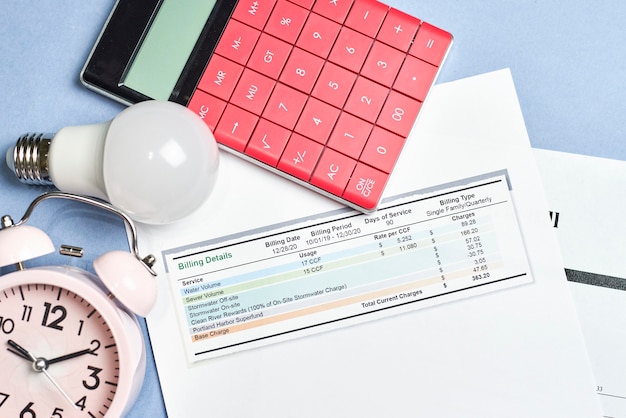Is Your Emergency Fund Enough? Calculate a 3-Month Safety Net

Wondering ‘Is Your Emergency Fund Sufficient? Calculate Your 3-Month Safety Net Now’? This guide helps you determine your ideal emergency fund size, covering essential expenses and offering practical tips to ensure financial preparedness for unexpected events.
Are you prepared for the unexpected? Life throws curveballs, and having a solid emergency fund is your first line of defense. But how do you know **is your emergency fund sufficient? Calculate your 3-month safety net now** to ensure you’re truly covered.
Determine Your Essential Monthly Expenses
The first step in answering, “Is your emergency fund sufficient?” is to understand how much money you need each month. This isn’t about luxuries; it’s about the essentials that keep you afloat.
Calculating your true monthly expenses is more than just glancing at your bank statement. It requires a detailed review of your spending habits to identify what’s truly necessary.
Housing Costs
Your housing costs are likely your biggest expense. Include rent or mortgage payments, property taxes (if applicable), and homeowner’s insurance.
Utilities
Don’t forget utilities like electricity, gas, water, and internet. Look at your past bills to get an average monthly cost. Also the waste and sewage bill, if payed separately.

After identifying these expenses, use the list below to make sure everything is organized.
- Rent or Mortgage: Know exactly how much you pay each month.
- Property Taxes & Insurance: If you are a homeowner, make sure these expenses are also accounted for.
- Utilities: Include payments for gas, waste management, water and electricity.
- Basic Groceries: How much do you spend on the minimum sustenance for your household?
Understanding your bare minimum monthly expenses ensures you have a realistic figure to aim for when building your emergency fund. A clear picture of your essentials gives you the foundation you need to assess whether **is your emergency fund sufficient** to cover you during tough times.
Calculate Your 3-Month Emergency Fund Goal
Once you’ve determined your essential monthly expenses, you can calculate your 3-month emergency fund goal. This target will help you measure if your savings are adequate.
Multiplying your monthly expenses by three provides a safety net designed to cover essential costs during job loss, medical emergencies, or other financial setbacks. This guideline is widely recommended by financial experts.
The Importance of the 3-Month Buffer
A 3-month emergency fund offers a balance between preparedness and practicality. It provides enough time to find a new job, address a medical issue, or handle unexpected repairs without accumulating debt.
Adjusting for Unique Circumstances
Consider factors like job security, dependents, and health. If you work in a volatile industry or have significant family responsibilities, you might prefer a larger emergency fund of 6-12 months’ worth of expenses.
- Job Security: Evaluate the stability of your job or industry.
- Dependents: Account for the financial needs of your children or other dependents.
- Health: Factor in your health insurance coverage and potential out-of-pocket costs.
Calculating your 3-month emergency fund goal is a practical approach to answering, “**Is your emergency fund sufficient?**” With a concrete number in mind, you can take actionable steps to build your savings and secure your financial future.
Assess Your Current Emergency Savings
Now that you know your 3-month target, it’s time to evaluate your current emergency savings. This step involves taking stock of your accessible funds.
Gathering all your savings information in one place provides a clear picture of where you stand. Transparency is crucial for making informed financial decisions.
Identify Liquid Assets
Focus on funds you can access quickly without penalties, such as savings accounts, money market accounts, and easily redeemable investments. Emergency funds should be readily available when needed.
Exclude Illiquid Investments
Avoid including assets like retirement accounts or real estate. These cannot be easily converted to cash without significant tax implications or delays.

Below are some popular places where people save their emergency funds:
- Savings Account: Traditional, easy to access, but may have low interest rates.
- Money Market Account: Higher interest rates than savings accounts, with check-writing privileges.
- Certificates of Deposit (CDs): Fixed-term investments with higher interest rates, but penalties for early withdrawal.
Assessing your current emergency savings paints a clear picture of whether **is your emergency fund sufficient**. By comparing your current savings to your 3-month goal, you can determine the gap you need to close to achieve financial security.
Bridge the Gap: Strategies to Increase Savings
If your current savings fall short of your 3-month emergency fund goal, don’t worry. Several strategies can help you bridge the gap.
Increasing your savings involves both cutting expenses and boosting income. A combination of these approaches can accelerate your progress.
Create a Budget
Track your spending to identify areas where you can cut back. Small changes can add up over time. Prioritize saving as a non-negotiable expense.
Automate Savings
Set up automatic transfers from your checking account to your savings account each month. Automating your savings makes it easier to stay consistent.
Here is what you have to do:
- Reduce Discretionary Spending: Evaluate your lifestyle choices.
- Increase Income: Take on a side hustle or negotiate a raise at work.
- Consolidate Debt: Lower interest rates to free up extra cash for savings.
Implementing these strategies reduces stress and clarifies whether **is your emergency fund sufficient**. With each step, you move closer to your 3-month goal, bringing increased financial stability.
Refine Your Emergency Fund Strategy
Building an emergency fund is an ongoing process. Regularly refining your strategy ensures it remains aligned with your evolving needs and financial circumstances.
Periodic reviews of your emergency fund help you adapt to life changes and economic shifts. Staying proactive ensures your preparedness.
Adjust for Life Events
Significant life events like marriage, childbirth, or a new job can impact your expenses. Reassess your emergency fund needs to reflect these changes.
Rebalance Your Portfolio
Over time, your asset allocation may drift from your target. Periodically rebalance your portfolio to maintain your desired risk level.
Reviewing and adjusting your strategy regularly is pertinent:
- Annual Review: Make a yearly assessment of your emergency fund.
- Adjust for Inflation: Ensure your savings keep pace with the rising cost of living.
- Seek Professional Advice: Consult with a financial advisor for personalized guidance.
By refining your emergency fund strategy consistently, it becomes clear if **is your emergency fund sufficient** by ensuring your savings evolve in line with your life, delivering lasting peace of mind.
Maintaining and Replenishing Your Fund
Once you’ve built your emergency fund, the next step is to maintain and replenish it. This ensures the money is always available when you need it.
Treat your emergency fund as a sacred resource, only to be used for true emergencies. Replenish it as soon as possible after each withdrawal.
Avoid Dipping Into It For Non-Emergencies
Resist the urge to use your emergency fund for discretionary spending. Protect it for genuine financial crises.
Replenish After Use
If you must tap into your emergency fund, make a plan to replenish it quickly. Treat it as a top priority.
Protecting your savings account with careful planning:
- Set Clear Guidelines: Define what constitutes a true emergency.
- Create a Replenishment Plan: Outline how you’ll rebuild your savings.
- Monitor Your Progress: Track your savings to stay on track.
Maintaining and replenishing your emergency fund secures the answer of “**Is your emergency fund sufficient?**” by protecting yourself against financial emergencies.
| Key Point | Brief Description |
|---|---|
| 💰 Monthly Expenses | Calculate your essential monthly costs for housing, utilities and groceries. |
| 🎯 3-Month Goal | Multiply monthly expenses by 3 to define an emergency fund target. |
| 📊 Liquid Assets | Consider savings and money market accounts, excluding illiquid fund investments. |
| 🔄 Budgeting | Automate saving plans, cut on variable expenses, and create income sources. |
Frequently Asked Questions
▼
Focus on needs rather than wants. Include rent/mortgage, utilities, basic groceries, transportation, and healthcare. Exclude dining out, entertainment, and luxury items to ensure a realistic bare minimum.
▼
Calculate your expenses based on the lowest income you typically receive. Aim for a larger emergency fund (6-12 months of expenses) to provide a more substantial buffer against income fluctuations.
▼
Choose a safe, liquid account like a high-yield savings account or money market account. These options offer easy access to your funds while earning some interest, helping your savings grow over time.
▼
Review your emergency fund at least once a year, or whenever you experience a major life change (like a new job, relocation, or family changes). Adjust your savings goal as needed to reflect your current situation.
▼
While a 3-month fund suits many, it may not be sufficient for all. Factors like job security, health status, and dependents influence the ideal size. Assess your circumstances and consider a larger fund if necessary.
Conclusion
Determining if is your emergency fund sufficient involves a clear understanding of your essential monthly expenses, a realistic savings goal, and disciplined savings strategies. Consistently evaluating and adapting your approach ensures you’re well-prepared for life’s inevitable financial surprises, providing invaluable peace of mind.






